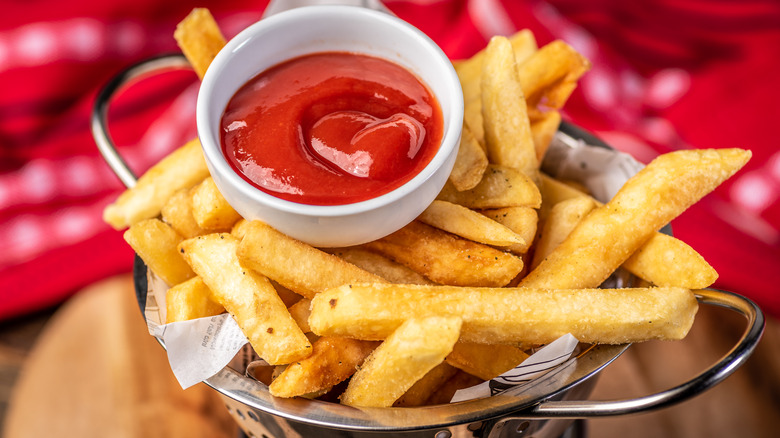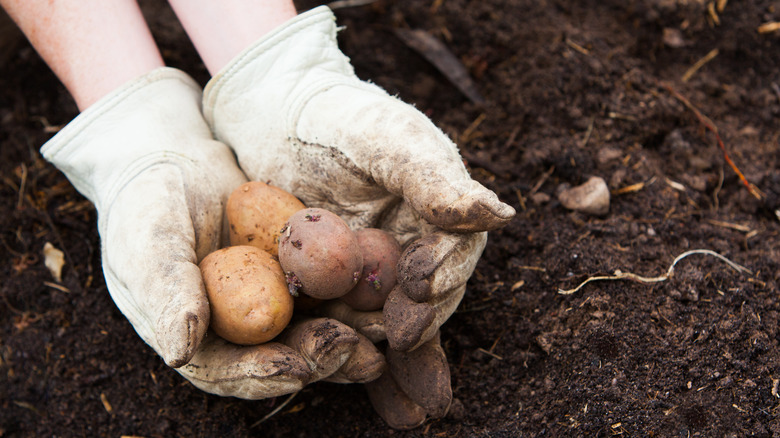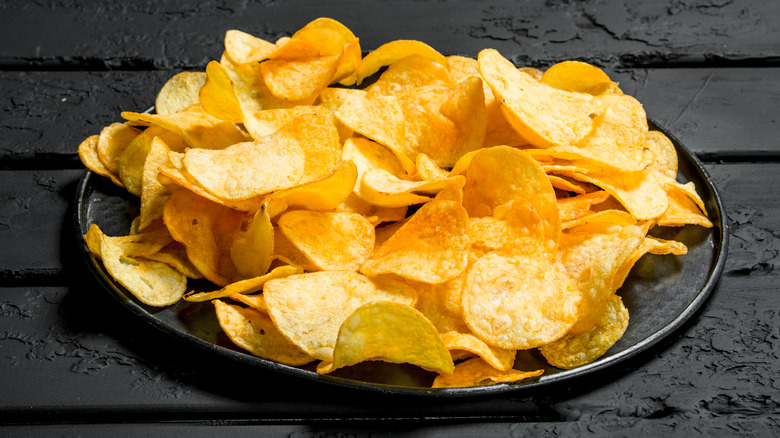Australia Is Facing An Unprecedented Fried Potato Shortage, Here's What We Know
Do spuds come from a land down under, where taters grow and farmers plunder? Nowadays, yes, in considerable quantities, but this wasn't always the case. As explained by The Farmer, the first record of potatoes being grown in Australia comes from 1797, when only a few dozen acres were being used. That number has grown significantly since then, and in recent years, potatoes that are collectively worth hundreds of millions of Australian dollars are grown in the country each season. Tellingly, over half of that potato growth goes to processing, primarily crisping (to make potato chips and what Americans call "french fries").
The Australian love for potatoes continues to grow. In 2022, data from Hort Innovation showed that the number of Aussies consuming potatoes was on the rise, with 87% of them buying potatoes on a typical trip to the grocery store (via ABC News). Yet, even with high consumer demand and production rising, hardships like an exodus of farmers, inclement weather, and inflation spelled trouble on the agrarian horizon.
Climate issues are no small potatoes
Mother Nature dropped a hot potato of a problem on Australia this spud season. As reported by SBS News, 2022 in Australia saw plenty of rain, which lowered the yields of its potatoes. As Katherine Myers, horticulture VP of the Victorian Farmers Federation, told SBS, "The prolonged wet weather made it too difficult to manage the crops that were in the ground, made it difficult to harvest early crops, and it meant there were really quite significant delays in getting the new crops planted."
Unfortunately, the potatoes intended for processing have particularly stringent requirements to meet. So, the poor growth this season has hit crispy taters the hardest, including potato chips. Worse yet, Australia can't simply import potatoes from its usual foreign sources, since New Zealand had similar problems and Europe faced drought, which further decreased the global potato supply.
Is there any hope in sight? According to The Conversation, this isn't exactly the end of the world, just a temporary upset to the market. Grocery stores such as Coles placed restrictions on how many frozen potato products (like fries you can pop in the oven) customers can buy. In certain cases, restaurants are even expecting to face months of no new spud shipments. Even so, some fast food chains are continuing to use potatoes, such as McDonald's and its new "potato scallops with chicken salt" dish. Plus, 2023 is expected to have a fairer season with better outputs. Are folks worrying over nothing?
New Zealand once had a Chipocalypse
The current fried potato shortage in Australia might seem like it's another truly unexpected factoid in a whole list of surprising things about the land down under. Yet, this isn't even the first time a fried spud shortage has struck Oceania. In fact, a shortage in nearby New Zealand once got so bad that the internet practically declared it doomsday.
As reported by the BBC, wet weather in 2017 destroyed a considerable amount of New Zealand's potato crop that year. So, there was a lack of crisps, and the prices for what supply remained rose steeply. Supermarket chains posted warnings about potato chip supplies being scarce for the rest of the year. Chris Claridge, the chief executive for New Zealand's potato association, told The Guardian, "This is becoming a food security issue as the effects of climate change take their toll on our potato crop."
Still, coverage of this "apocalypse" sort of blew over. There was a flurry of reports and social media posts about it in October of 2017, and then not much else. There was no panic buying. Supermarkets walked back their warnings. Claridge announced folks would have new potatoes by Christmas. It was certainly not an ideal situation, but it wasn't the end of the world, either. Now, the question is, will Australia's own potato shortage also work itself out in the end or is this the start of a troubling pattern?


